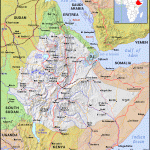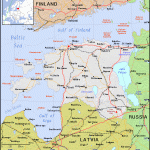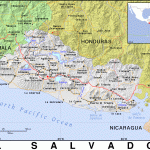Welcome to States of the United States of America, where English Learners from all over the world can learn facts, become familiar with, and improve their English skills. Here we will learn about different states in the USA, including facts and tourism destinations. Click on the following links to access state-specific articles with audio recordings, so that you can read-along with the audio and improve your American English pronunciation, listening, and reading comprehension.
INTERESTING FACTS, PLACES TO VISIT, AND THINGS TO SEE IN EACH STATE OF THE USA
- Alabama
- Alaska
- Arizona
- Arkansas
- California
- Colorado
- Connecticut
- Delaware
- Florida
- Georgia
- Hawaii
- Idaho
- Illinois
- Indiana
- Iowa
- Kansas
- Kentucky
- Louisiana
- Maine
- Maryland
- Massachusetts
- Michigan
- Minnesota
- Mississippi
- Missouri
- Montana
- Nebraska
- Nevada
- New Hampshire
- New Jersey
- New Mexico
- New York
- North Carolina
- North Dakota
- Ohio
- Oklahoma
- Oregon
- Pennsylvania
- Rhode Island
- South Carolina
- South Dakota
- Tennessee
- Texas
- Utah
- Vermont
- Virginia
- Washington
- West Virginia
- Wisconsin
- Wyoming
Understanding America: The Importance of Learning About All 50 States
Introduction
The United States of America is a vast and diverse country, composed of 50 unique states, each with its own history, culture, and contributions to the nation as a whole. As university students, delving into the study of all American states can provide a wealth of knowledge and insights that extend far beyond mere geography. This comprehensive exploration offers numerous benefits, ranging from enhanced cultural awareness to a deeper understanding of the country’s political and economic landscape.
Historical Context and Cultural Diversity
One of the primary reasons for studying all American states is to gain a rich historical context of the nation’s development. Each state has its own unique story of formation, settlement, and growth, which collectively weave the complex tapestry of American history. For instance, the original 13 colonies on the East Coast tell the tale of early European settlement and the birth of the nation, while states like California and Texas highlight the country’s westward expansion and the concept of Manifest Destiny.
Moreover, the United States is often described as a “melting pot” or a “salad bowl” of cultures, and this diversity is reflected in the individual states. By studying each state, students can appreciate the various cultural influences that have shaped different regions. For example:
- Louisiana’s French and Creole heritage
- New Mexico’s strong Hispanic and Native American influences
- Hawaii’s Polynesian culture
- The Scandinavian roots in Minnesota and the Upper Midwest
Understanding these cultural nuances fosters greater empathy and appreciation for the diverse backgrounds that make up the American populace.
Political and Governmental Systems
The United States operates under a federal system of government, where power is shared between the national government and state governments. By studying all 50 states, students gain crucial insights into:
- The variations in state governments and their structures
- Different approaches to policy-making and implementation
- The interplay between state and federal laws
- The Electoral College system and its impact on national elections
This knowledge is essential for comprehending the complexities of American democracy and the ways in which individual states can influence national politics. For instance, understanding the political leanings of different states can help explain voting patterns in presidential elections or the passage of certain laws at the state level before they gain national traction.
Economic Diversity and Interdependence
Each state contributes to the national economy in unique ways, and studying all 50 states provides a comprehensive view of the country’s economic landscape. Students can learn about:
- Regional economic specializations (e.g., Silicon Valley’s tech industry in California, the automotive industry in Michigan)
- Natural resource distribution and its impact on state economies
- The role of agriculture in different states
- Tourism as an economic driver in states like Florida and Nevada
Understanding these economic factors helps students grasp the interdependence between states and the importance of interstate commerce. It also sheds light on economic policies, trade agreements, and the distribution of federal funds among states.
Geographic and Environmental Awareness
The United States spans a continent, encompassing a wide variety of landscapes, climates, and ecosystems. Studying all 50 states allows students to develop a comprehensive understanding of:
- The country’s diverse geography, from the Alaskan tundra to the Florida Everglades
- Climate variations and their impact on lifestyle and industry
- Natural resources and their distribution across states
- Environmental challenges faced by different regions (e.g., drought in California, hurricanes in the Gulf Coast states)
This knowledge is crucial for understanding environmental policies, conservation efforts, and the challenges of sustainable development across the nation.
Educational and Career Opportunities
A thorough understanding of all 50 states can open up numerous educational and career opportunities for university students. It can inform decisions about:
- Where to pursue further education or specialized training
- Career prospects in different states and regions
- Cost of living and quality of life considerations for future relocation
- Networking opportunities across the country
Moreover, this knowledge is valuable in many professional fields, including business, politics, education, and social services, where understanding regional differences is crucial for success.
Conclusion
In conclusion, learning about all American states is an invaluable endeavor for university students. It provides a comprehensive understanding of the nation’s history, culture, politics, economy, and geography. This knowledge not only enriches one’s academic experience but also prepares students to be more informed citizens and professionals in an increasingly interconnected world. By appreciating the unique characteristics and contributions of each state, students develop a more nuanced and accurate picture of the United States as a whole, fostering a deeper sense of national identity and unity amidst diversity.




